1 of 48
Download to read offline


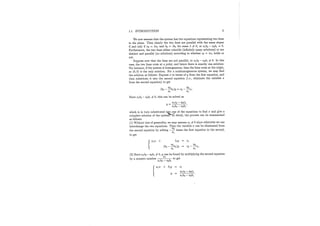
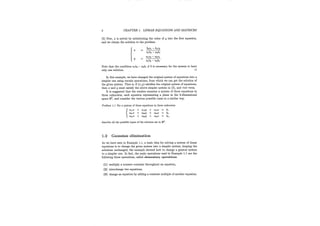
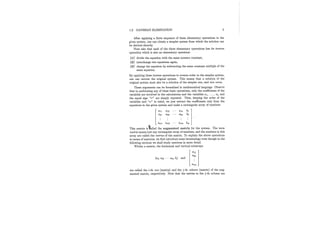


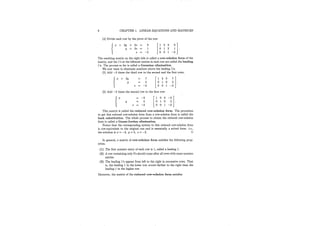
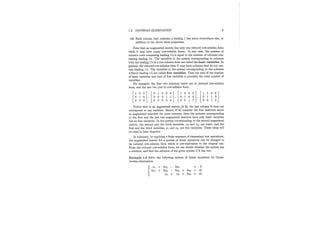
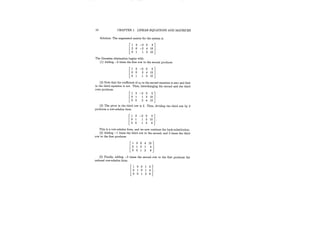
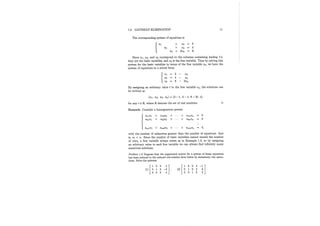
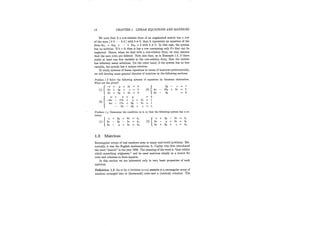
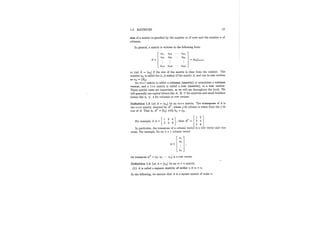
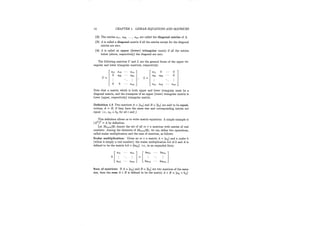
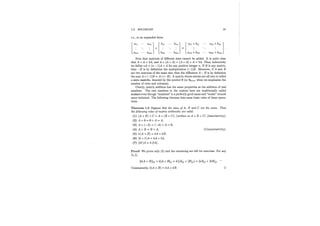

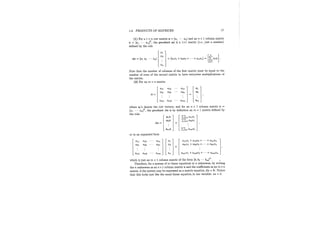
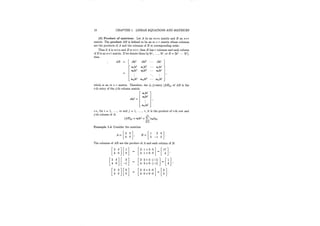

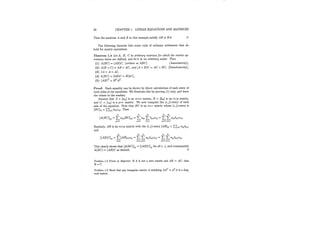

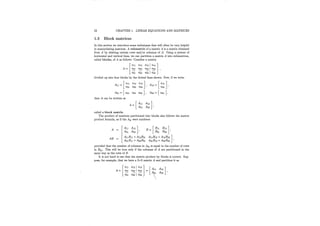
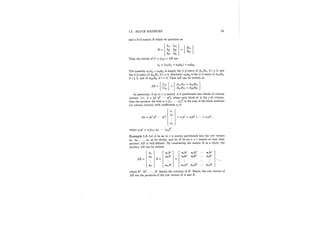

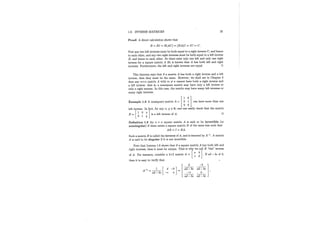
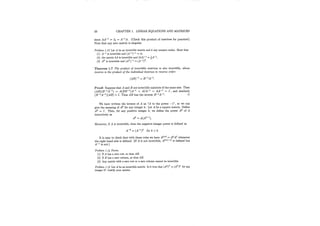
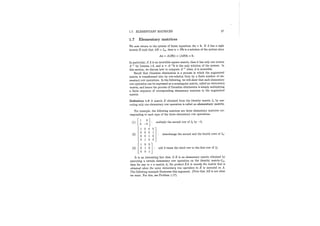
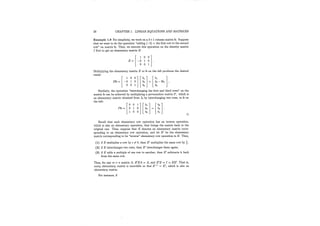
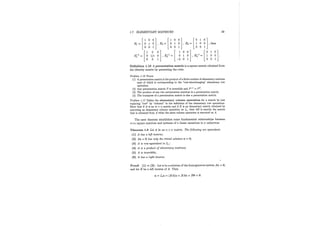

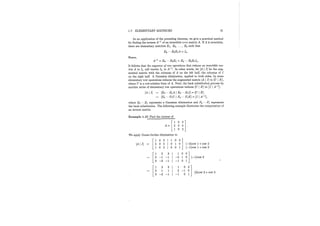

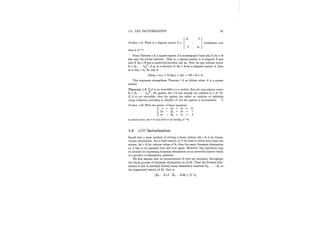
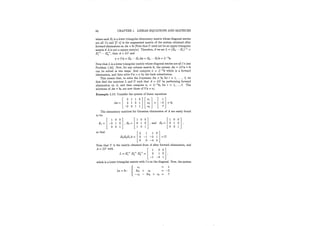
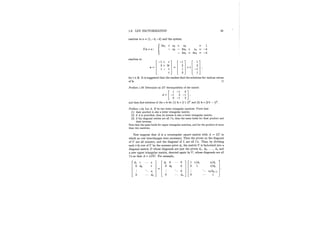
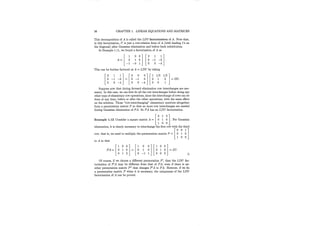

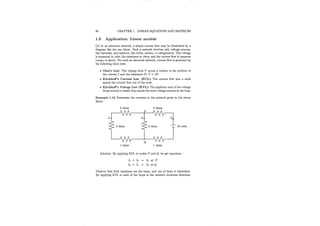
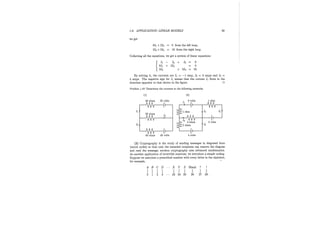
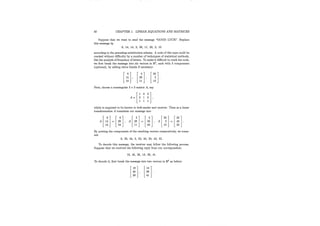
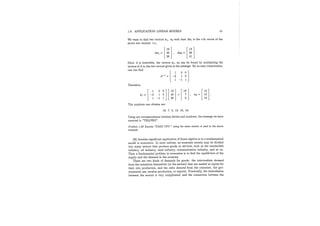


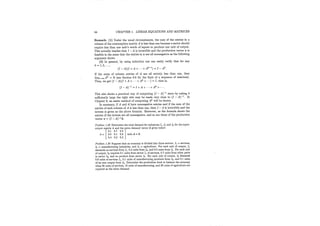


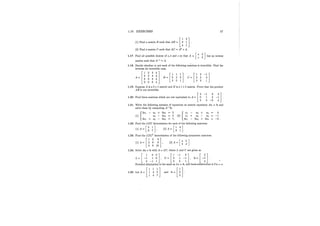
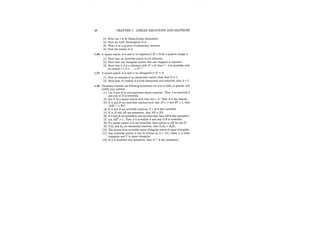
Recommended
1 Sampling and Signal Reconstruction.pdf
1 Sampling and Signal Reconstruction.pdfMohamedshabana38
╠²
This document discusses analog to digital conversion and signal sampling and reconstruction. It begins by explaining the advantages of digital over analog communication and the process of analog to digital conversion using pulse code modulation. It then covers the sampling theorem, which states that a bandlimited signal can be reconstructed from samples taken at or above the Nyquist rate. The document provides the mathematical representations of sampling and discusses how the spectrum of a sampled signal consists of copies of the original spectrum spaced at integer multiples of the sampling frequency. It describes how reconstruction involves the use of an interpolation filter, such as the sinc function, to filter out copies and reconstruct the original signal from its samples. Finally, it discusses practical considerations in sampling and reconstruction.2 Aliasing (1).pdf
2 Aliasing (1).pdfMohamedshabana38
╠²
1. Aliasing occurs when a signal with frequency components above the Nyquist frequency is sampled. This causes frequency folding, where frequencies above the Nyquist frequency are reflected about the Nyquist frequency and appear as lower false frequencies.
2. To prevent aliasing, the input signal must be filtered with an anti-aliasing filter before sampling to remove all frequency components above the Nyquist frequency.
3. The Nyquist sampling theorem states that to perfectly reconstruct a signal from its samples, the sampling frequency must be greater than twice the maximum frequency of the original signal.1.pdf
1.pdfMohamedshabana38
╠²
This document introduces communications engineering. It defines communication as the transfer of information from a source to a destination using a communication system. Examples of modern communication methods that use electrical signals include satellite, microwave, optical fibers, and copper cables. The course will study the basic communication techniques used in the world today, including their advantages and disadvantages, and how communication systems implement these techniques. Communication systems can transmit information in simplex, half-duplex, or full-duplex modes.dsl-advances-0130938106-9780130938107.pdf
dsl-advances-0130938106-9780130938107.pdfMohamedshabana38
╠²
This document summarizes developments in digital subscriber line (DSL) technology since its introduction. It describes how DSL services grew from 1 million customers in 2000 to over 30 million by 2002. It also discusses the transition from pilot programs to mass market offerings, driven by competition from cable modems and changes to regulations governing telecommunications. The book provides updates on technologies like ADSL, HDSL, SHDSL, and VDSL, and covers topics such as dynamic spectrum management, networking, security, and standards.419907669-Linear-Algebra-by-Gilbert-Strang.pdf
419907669-Linear-Algebra-by-Gilbert-Strang.pdfMohamedshabana38
╠²
This document discusses the development of a new type of battery that could revolutionize energy storage. It describes how the battery uses a newly discovered material as its cathode that allows it to store 10 times more energy density than lithium-ion batteries. The document concludes by stating that this breakthrough could enable the widespread adoption of electric vehicles and renewable energy sources by alleviating range and power constraints.Cable Engineering for Local Area Networks (Barry J. Elliott) (Z-Library).pdf
Cable Engineering for Local Area Networks (Barry J. Elliott) (Z-Library).pdfMohamedshabana38
╠²
This document discusses austenitic stainless steels, including their history, classification, and key properties. It begins with an overview of the development of stainless steels starting in the late 19th century. It then describes the main types of stainless steels - austenitic, martensitic, and ferritic - focusing on their characteristic compositions and microstructures. The document highlights how alloying elements affect phase stability and properties like corrosion resistance and formability.Module 1 (1).pdf
Module 1 (1).pdfMohamedshabana38
╠²
This document outlines the syllabus and course objectives for the digital signal processing course ECE2006 being offered in the fall semester of 2021. The course aims to teach students concepts related to signals and systems in the time and frequency domains, design of analog and digital filters, and realization of digital filters using various structures. The syllabus is divided into 7 modules covering topics such as Fourier analysis, design of IIR and FIR filters, and realization of lattice filters. Students will be evaluated through continuous assessments, quizzes, assignments, and a final exam.exfo_spec-sheet_maxtester-635_v16_en.pdf
exfo_spec-sheet_maxtester-635_v16_en.pdfMohamedshabana38
╠²
The MaxTester 635 is a next-generation tool for testing broadband deployments over copper wires. It supports testing of ADSL2+, VDSL2, and Ethernet networks. Key features include automated testing of DSL services, copper line quality, IPTV, and VoIP. Test results are displayed clearly on a large, easy-to-use touchscreen. The MaxTester 635 simplifies installation and troubleshooting of multi-play networks.454022781-ODN-Planning-and-Design-Suggestions-TLF.pdf
454022781-ODN-Planning-and-Design-Suggestions-TLF.pdfMohamedshabana38
╠²
This document provides guidance on optical distribution network (ODN) design for fiber-to-the-home (FTTH) deployments. It discusses ODN topology design including star, ring and bus configurations. It also covers ODN protection strategies like fiber backup and OLT interface backup. The document reviews splitting strategies for centralized and cascaded optical splitting. It examines locations for placing optical splitters both indoors and outdoors. Overall, the document is a guide on best practices for designing the fiber optic infrastructure for FTTH networks.383934148-DWDM-101-Introduction-to-DWDM-2-pdf.pdf
383934148-DWDM-101-Introduction-to-DWDM-2-pdf.pdfMohamedshabana38
╠²
This document provides an introduction to dense wavelength division multiplexing (DWDM) including:
1. DWDM allows multiple optical channels to be transmitted over a single fiber, increasing network capacity and scalability. It enables transmission of terabits of data over long distances without regeneration.
2. Key concepts in optical transmission are explained, including wavelength bands, fiber attenuation, dispersion, and nonlinear effects.
3. The development of single-mode fiber is summarized, from early multimode fiber to modern low-dispersion fiber designs.Applications of Operational Amplifiers 3rd generation techniques (Jerald G. G...
Applications of Operational Amplifiers 3rd generation techniques (Jerald G. G...Mohamedshabana38
╠²
La cultura ├© considerata un bene dell'umanit├Ā, rappresentando un patrimonio comune da valorizzare. Le culture, in quanto patrimonio umano, giocano un ruolo fondamentale nella societ├Ā. ├ł importante preservare e promuovere questa ricchezza culturale.408375669-XDSL.pdf
408375669-XDSL.pdfMohamedshabana38
╠²
VDSL uses discrete multi-tone modulation to transmit data over multiple subcarriers. Service providers are deploying VDSL to compete with cable companies and offer bundled services like IPTV. VDSL standards allow for higher speeds than ADSL by using a wider frequency band on existing copper loops. Dynamic spectrum management enables VDSL lines to dynamically optimize transmit power levels to maximize throughput while maintaining spectral compatibility with other DSL lines in the same binder.101483423-Fiber-Characterization-Training.pdf
101483423-Fiber-Characterization-Training.pdfMohamedshabana38
╠²
This document discusses fiber characterization and fiber optic network testing. It provides information on:
- Assessing fiber capacity by measuring attenuation, dispersion, and non-linearities.
- Common fiber types (single-mode and multi-mode), industry standards, elements of loss like attenuation and bending losses.
- Testing methods like insertion loss measurement, optical return loss measurement using OCWR and OTDR, and measuring polarization mode dispersion and chromatic dispersion.
- The importance of fiber inspection and cleaning to avoid contamination issues that can reduce signal performance.424185963-Introduction-to-VoLTE.pdf
424185963-Introduction-to-VoLTE.pdfMohamedshabana38
╠²
This document provides an introduction to VoLTE including:
1. The key drivers for VoLTE including lack of native voice in LTE, competition from OTT apps, and enabling fixed-mobile convergence.
2. The end-to-end VoLTE architecture consisting of the LTE access network, IP Multimedia Subsystem for call control, and Policy and Charging Control.
3. Procedures for VoLTE including initial registration, call setup utilizing SIP signaling and dedicated bearers, and interworking with legacy networks.exfo_reference-guide_otn.pdf
exfo_reference-guide_otn.pdfMohamedshabana38
╠²
The document provides an overview of optical transport networks (OTNs) as defined by ITU-T G.709. It describes the OTN layers including optical channel (OCh), optical multiplex section (OMS), optical transmission section (OTS), and optical channel transport unit (OTU). The OTU layer introduces forward error correction and a digital wrapper with overhead to manage digital functions. Client signals are adapted at the optical channel payload unit (OPU) layer and then mapped into the optical channel data unit (ODU) for transport over the OTN.388865344-990dsl-Manu-copper-loop-tester.pdf
388865344-990dsl-Manu-copper-loop-tester.pdfMohamedshabana38
╠²
This document provides a user guide and warranty information for the Fluke Networks CopperPro Loop Tester. Some key details:
- The warranty is for one year and covers defects in materials and workmanship. Parts, accessories, and repairs are warranted for 90 days.
- Under warranty, Fluke will repair or replace defective products, or provide a refund at their discretion. Damage from misuse or abnormal conditions is not covered.
- The warranty is limited and excludes consequential damages. Warranty support requires purchase from an authorized seller.
- Safety, maintenance, technical support, and service information is provided for proper operation of the CopperPro Loop Tester.exfo_reference-guide_resistive-fault-location-methods_en.pdf
exfo_reference-guide_resistive-fault-location-methods_en.pdfMohamedshabana38
╠²
Resistive fault location (RFL) testing uses voltage and current measurements to locate high resistance faults in cables. There are different RFL test modes for different fault types, including two-wire for single wire faults, four-wire for faults between wires, and K-test for multiple wire faults. Proper test setup including cable temperature, length, and load coils is important for accurate results. RFL testing can locate faults to ground, between wires, or on bridged taps.Alcatel 1000 ADSL 7300 ASAM.pdf
Alcatel 1000 ADSL 7300 ASAM.pdfMohamedshabana38
╠²
This document provides specifications for various Digital Subscriber Line (DSL) interfaces available on Alcatel's 7300 ASAM network access device, including ADSL, ADSL2, ADSL2+, and VDSL interfaces. It describes the frequency spectra, transport capacities, framing modes, and other technical characteristics for each DSL technology above POTS telephone lines and ISDN lines. The document is an interface specification for the ASAM device and is intended to ensure compatibility with network operators' DSL networks.211455913-ebook-DSL-Advances-Prentice-Hall-pdf.pdf
211455913-ebook-DSL-Advances-Prentice-Hall-pdf.pdfMohamedshabana38
╠²
This document provides an overview and table of contents for the book "DSL Advances" which discusses developments in digital subscriber line technology since 1999. Some of the key topics covered in the book include next generation symmetric DSL technologies like HDSL2 and SHDSL, recent advances in ADSL standards and deployment, dynamic spectrum management, voice over DSL, networking aspects, security, and standards development. The book is intended to provide an update on DSL technologies and applications for technical professionals since the publication of the earlier book "Understanding Digital Subscriber Line Technology".21 Receivers.pdf
21 Receivers.pdfMohamedshabana38
╠²
This document discusses different types of radio receivers. It describes receivers as electronic equipment that picks up desired radio frequency signals by amplifying and demodulating them. It then classifies receivers based on their principle of operation and application, discussing tuned radio frequency (TRF) receivers, superheterodyne receivers, AM receivers, FM receivers, and more. It also covers characteristics of good receivers like sensitivity, selectivity, and signal-to-noise ratio. Key components like the local oscillator, mixer, and limiter circuit are explained in the context of superheterodyne and FM receivers.exfo_book_guide-wdm_en.pdf
exfo_book_guide-wdm_en.pdfMohamedshabana38
╠²
This document appears to be a chapter from a book or manual on optical communications and wavelength-division multiplexing (WDM) technology. It contains:
1) An introductory section providing background on the history and development of optical communications and WDM technology.
2) A table of contents listing the various sections and subsections within the chapter, including discussions of the basics of WDM systems, critical parameters, component testing, and more.
3) Credits for the authors and production team responsible for the publication.
The document provides an overview of the content covered in the chapter on the fundamentals and testing of WDM components and systems.More Related Content
More from Mohamedshabana38 (20)
Module 1 (1).pdf
Module 1 (1).pdfMohamedshabana38
╠²
This document outlines the syllabus and course objectives for the digital signal processing course ECE2006 being offered in the fall semester of 2021. The course aims to teach students concepts related to signals and systems in the time and frequency domains, design of analog and digital filters, and realization of digital filters using various structures. The syllabus is divided into 7 modules covering topics such as Fourier analysis, design of IIR and FIR filters, and realization of lattice filters. Students will be evaluated through continuous assessments, quizzes, assignments, and a final exam.exfo_spec-sheet_maxtester-635_v16_en.pdf
exfo_spec-sheet_maxtester-635_v16_en.pdfMohamedshabana38
╠²
The MaxTester 635 is a next-generation tool for testing broadband deployments over copper wires. It supports testing of ADSL2+, VDSL2, and Ethernet networks. Key features include automated testing of DSL services, copper line quality, IPTV, and VoIP. Test results are displayed clearly on a large, easy-to-use touchscreen. The MaxTester 635 simplifies installation and troubleshooting of multi-play networks.454022781-ODN-Planning-and-Design-Suggestions-TLF.pdf
454022781-ODN-Planning-and-Design-Suggestions-TLF.pdfMohamedshabana38
╠²
This document provides guidance on optical distribution network (ODN) design for fiber-to-the-home (FTTH) deployments. It discusses ODN topology design including star, ring and bus configurations. It also covers ODN protection strategies like fiber backup and OLT interface backup. The document reviews splitting strategies for centralized and cascaded optical splitting. It examines locations for placing optical splitters both indoors and outdoors. Overall, the document is a guide on best practices for designing the fiber optic infrastructure for FTTH networks.383934148-DWDM-101-Introduction-to-DWDM-2-pdf.pdf
383934148-DWDM-101-Introduction-to-DWDM-2-pdf.pdfMohamedshabana38
╠²
This document provides an introduction to dense wavelength division multiplexing (DWDM) including:
1. DWDM allows multiple optical channels to be transmitted over a single fiber, increasing network capacity and scalability. It enables transmission of terabits of data over long distances without regeneration.
2. Key concepts in optical transmission are explained, including wavelength bands, fiber attenuation, dispersion, and nonlinear effects.
3. The development of single-mode fiber is summarized, from early multimode fiber to modern low-dispersion fiber designs.Applications of Operational Amplifiers 3rd generation techniques (Jerald G. G...
Applications of Operational Amplifiers 3rd generation techniques (Jerald G. G...Mohamedshabana38
╠²
La cultura ├© considerata un bene dell'umanit├Ā, rappresentando un patrimonio comune da valorizzare. Le culture, in quanto patrimonio umano, giocano un ruolo fondamentale nella societ├Ā. ├ł importante preservare e promuovere questa ricchezza culturale.408375669-XDSL.pdf
408375669-XDSL.pdfMohamedshabana38
╠²
VDSL uses discrete multi-tone modulation to transmit data over multiple subcarriers. Service providers are deploying VDSL to compete with cable companies and offer bundled services like IPTV. VDSL standards allow for higher speeds than ADSL by using a wider frequency band on existing copper loops. Dynamic spectrum management enables VDSL lines to dynamically optimize transmit power levels to maximize throughput while maintaining spectral compatibility with other DSL lines in the same binder.101483423-Fiber-Characterization-Training.pdf
101483423-Fiber-Characterization-Training.pdfMohamedshabana38
╠²
This document discusses fiber characterization and fiber optic network testing. It provides information on:
- Assessing fiber capacity by measuring attenuation, dispersion, and non-linearities.
- Common fiber types (single-mode and multi-mode), industry standards, elements of loss like attenuation and bending losses.
- Testing methods like insertion loss measurement, optical return loss measurement using OCWR and OTDR, and measuring polarization mode dispersion and chromatic dispersion.
- The importance of fiber inspection and cleaning to avoid contamination issues that can reduce signal performance.424185963-Introduction-to-VoLTE.pdf
424185963-Introduction-to-VoLTE.pdfMohamedshabana38
╠²
This document provides an introduction to VoLTE including:
1. The key drivers for VoLTE including lack of native voice in LTE, competition from OTT apps, and enabling fixed-mobile convergence.
2. The end-to-end VoLTE architecture consisting of the LTE access network, IP Multimedia Subsystem for call control, and Policy and Charging Control.
3. Procedures for VoLTE including initial registration, call setup utilizing SIP signaling and dedicated bearers, and interworking with legacy networks.exfo_reference-guide_otn.pdf
exfo_reference-guide_otn.pdfMohamedshabana38
╠²
The document provides an overview of optical transport networks (OTNs) as defined by ITU-T G.709. It describes the OTN layers including optical channel (OCh), optical multiplex section (OMS), optical transmission section (OTS), and optical channel transport unit (OTU). The OTU layer introduces forward error correction and a digital wrapper with overhead to manage digital functions. Client signals are adapted at the optical channel payload unit (OPU) layer and then mapped into the optical channel data unit (ODU) for transport over the OTN.388865344-990dsl-Manu-copper-loop-tester.pdf
388865344-990dsl-Manu-copper-loop-tester.pdfMohamedshabana38
╠²
This document provides a user guide and warranty information for the Fluke Networks CopperPro Loop Tester. Some key details:
- The warranty is for one year and covers defects in materials and workmanship. Parts, accessories, and repairs are warranted for 90 days.
- Under warranty, Fluke will repair or replace defective products, or provide a refund at their discretion. Damage from misuse or abnormal conditions is not covered.
- The warranty is limited and excludes consequential damages. Warranty support requires purchase from an authorized seller.
- Safety, maintenance, technical support, and service information is provided for proper operation of the CopperPro Loop Tester.exfo_reference-guide_resistive-fault-location-methods_en.pdf
exfo_reference-guide_resistive-fault-location-methods_en.pdfMohamedshabana38
╠²
Resistive fault location (RFL) testing uses voltage and current measurements to locate high resistance faults in cables. There are different RFL test modes for different fault types, including two-wire for single wire faults, four-wire for faults between wires, and K-test for multiple wire faults. Proper test setup including cable temperature, length, and load coils is important for accurate results. RFL testing can locate faults to ground, between wires, or on bridged taps.Alcatel 1000 ADSL 7300 ASAM.pdf
Alcatel 1000 ADSL 7300 ASAM.pdfMohamedshabana38
╠²
This document provides specifications for various Digital Subscriber Line (DSL) interfaces available on Alcatel's 7300 ASAM network access device, including ADSL, ADSL2, ADSL2+, and VDSL interfaces. It describes the frequency spectra, transport capacities, framing modes, and other technical characteristics for each DSL technology above POTS telephone lines and ISDN lines. The document is an interface specification for the ASAM device and is intended to ensure compatibility with network operators' DSL networks.211455913-ebook-DSL-Advances-Prentice-Hall-pdf.pdf
211455913-ebook-DSL-Advances-Prentice-Hall-pdf.pdfMohamedshabana38
╠²
This document provides an overview and table of contents for the book "DSL Advances" which discusses developments in digital subscriber line technology since 1999. Some of the key topics covered in the book include next generation symmetric DSL technologies like HDSL2 and SHDSL, recent advances in ADSL standards and deployment, dynamic spectrum management, voice over DSL, networking aspects, security, and standards development. The book is intended to provide an update on DSL technologies and applications for technical professionals since the publication of the earlier book "Understanding Digital Subscriber Line Technology".21 Receivers.pdf
21 Receivers.pdfMohamedshabana38
╠²
This document discusses different types of radio receivers. It describes receivers as electronic equipment that picks up desired radio frequency signals by amplifying and demodulating them. It then classifies receivers based on their principle of operation and application, discussing tuned radio frequency (TRF) receivers, superheterodyne receivers, AM receivers, FM receivers, and more. It also covers characteristics of good receivers like sensitivity, selectivity, and signal-to-noise ratio. Key components like the local oscillator, mixer, and limiter circuit are explained in the context of superheterodyne and FM receivers.exfo_book_guide-wdm_en.pdf
exfo_book_guide-wdm_en.pdfMohamedshabana38
╠²
This document appears to be a chapter from a book or manual on optical communications and wavelength-division multiplexing (WDM) technology. It contains:
1) An introductory section providing background on the history and development of optical communications and WDM technology.
2) A table of contents listing the various sections and subsections within the chapter, including discussions of the basics of WDM systems, critical parameters, component testing, and more.
3) Credits for the authors and production team responsible for the publication.
The document provides an overview of the content covered in the chapter on the fundamentals and testing of WDM components and systems.